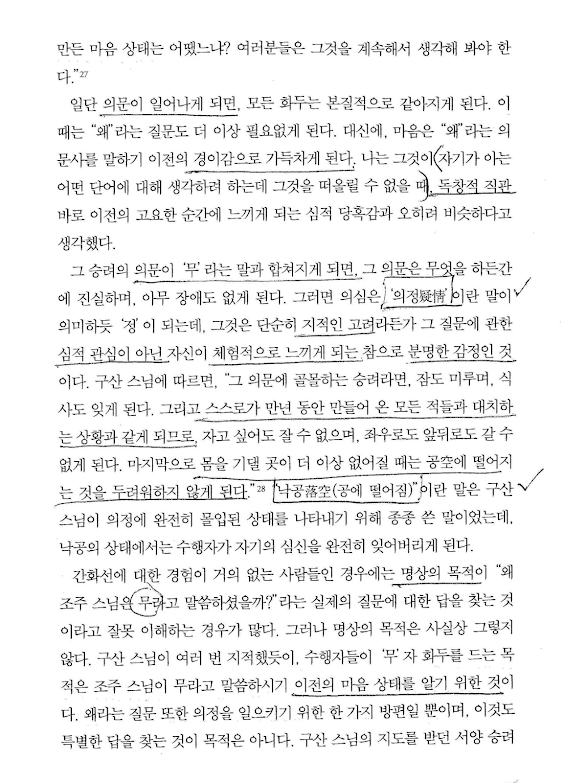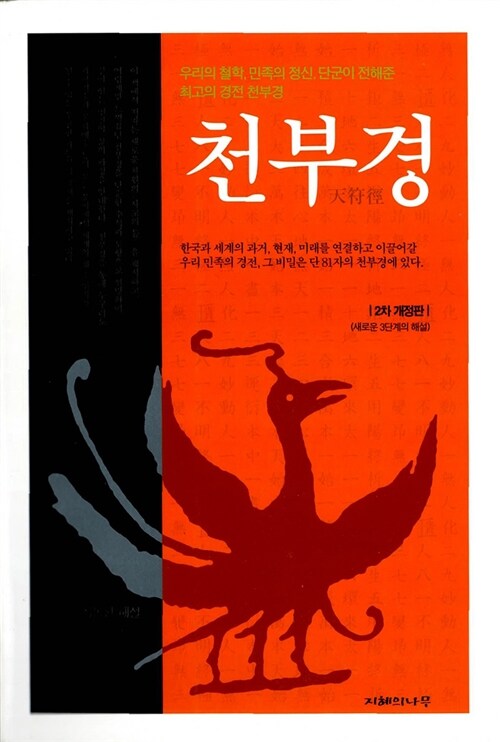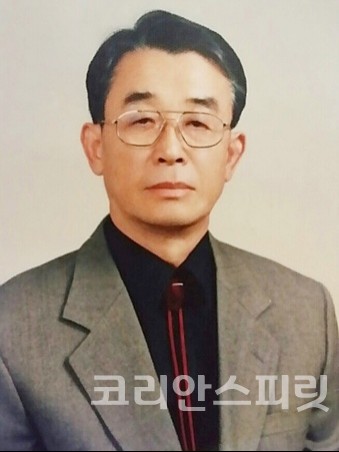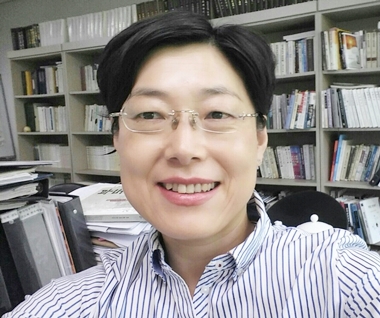= = =
Shweta Ramdas
145 reviews · 8 followers
Follow
May 29, 2017
How accountable are scientists to be for the future consequences of their inventions? Should they remain within their domains of technical expertise, or should they step out to participate in political decisions? This is the primary question that "Brighter than a Thousand Suns" deals with. It is more an account of the minds behind the invention of the atomic bomb and less about the actual science.
It is also about the many accidents of fate that brought about the development of the bomb. These certainly made me wonder if the bomb would have developed in an age of Wikileaks, when there is considerably less left to guesswork!
It's not like the issues in the book aren't relevant today. There still is a moratorium on genetic editing of human embryos; eugenics is the elephant in the golden shiny room that CRISPR has unlocked. This is an important book for scientists: our inventions/discoveries can take paths we could never guess. The sooner we start thinking about these questions, the better.
non-fiction
science
society
Like
Comment
Lennart
43 reviews
Follow
December 9, 2021
Ich wünschte jedes Geschichtsbuch wäre so geschrieben. Absolut perfekt!
Es ist leicht verständlich geschrieben, man muss nicht jeden Satz zehnmal lesen, bevor man ihn verstanden hat. Trotzdem ist es nicht stumpf geschrieben. Es ist hat einfach einen grandiosen Stil. Konnte kaum aufhören es zu lesen.
Dazu kommt die Recherche. Dass der Autor mit ganz viele Protagonisten selbst noch gesprochen hat und diese Zitate unterhaltsam in den Lesefluss einbindet, hilft auch ungemein, die Menschen hinter den Wissenschaftlern zu verstehen.
Denn hier wird nicht wie zB bei Lefebvre wahllos mit Namen um sich geworfen. Die Charaktere (und das sind nicht wenige!) werden mal kürzer, mal länger vorgestellt. Dadurch behält man ihre Namen, kann sie auch später noch zuordnen.
Auch so ordnet der Autor viele Geschehnisse historisch ein, ohne dabei zu bewerten.
Genauso muss es sein.
Ich hoffe ich finde weitere Bücher in diesem Stil.
Like
Comment
Profile Image for Alan.
Alan
29 reviews · 1 follower
Follow
Read
July 24, 2023
I read the 1964 Pelican Books reprint which has been on my tsundoku shelf for some decades. I was stimulated to read it prior to release of the ‘’Oppenheimer’ film in July 2021. I found the author’s use of English rather laboured with many torturous sentences, meaning I had to keep re-reading passages in order to understand exactly what he meant. I also found the Index curiously deficient . For example, I’ve had to add in the following: Bhagavad Gita (the sacred Hindu text quoted by Oppenheimer after the first test explosion), Chain Reaction, Deuterium Oxide Factory, Fat man, Thin Man, Fission discovery, Heavy Water, Hydrogen Bomb, Product Z, Site Y, Super Bomb, Titterton E, Trinity.
In reading this book I was struck by parallels between the apocalyptic fears of the start-up of the Large Hadron Collider in 2008 and those of the atomic and thermonuclear bombs. In the case of the LHC there were ‘Doomsday fears of the unknown’. People worried that black holes might be created that could swallow the planet. In the case of the atomic bomb, Fermi was taking bets at the test site of whether the World would end or not.
Nevertheless, I am sure this will prove to have been a valuable preparation prior to watching the Oppenheimer film.
history-science
science-fact
Like
Comment
Profile Image for Claudio.
Claudio
275 reviews
Follow
February 14, 2023
Affascinante, interessantissima storia dei lati umani della creazione della bomba atomica e di quella all'idrogeno, raccontati dal punto di vista "occidentale". Ho letto (sull'articolo di Wikipedia) che l'autore stesso, in seguito, non era più del tutto convinto delle affermazioni relative allo stato della ricerca in Germania durante la seconda guerra mondiale.
Si tratta comunque di una lettura indimenticabile per chi si interessa di questi argomenti, esattamente come The Making of the Atomic Bomb di Richard Rhodes
Letto come libro in tedesco.
Like
Comment
Profile Image for Miika Auvinen.
Miika Auvinen
4 reviews
Follow
June 6, 2023
The energy of the stars is generated by the fusion reaction. When this phenomenon of physics was harnessed as a weapon, it seemed to symbolize humanity's ability to create communities with the ability to strive for incredible achievements. Hisorikki's best gift is the scientists' descriptions of their inner world (feelings) when they realized they had developed something destructive beyond comprehension. The work broadened my world view. The history of the world is often discussed through warlords and battles, although scientists and innovations play a more important role, especially when we consider the broad developments of the human species.
Like
Comment
Profile Image for Shiven Dash.
Shiven Dash
3 books · 11 followers
Follow
July 28, 2017
One of the best books which i read recently. This not only gives a vivid description of the events that actually changed the world scenario and got us into an arms race but also describes the science events in a story telling fashion which makes episodes like electron discovery as a heart warming event to even the layman. The story line is absolutely mind boggling and portrayal of the human side of some of the world famous scientists was a discovery in itself. I thoroughly enjoyed the book and so earnestly wish that there should have been a part II to this.
Like
Comment
Profile Image for Slow Reader.
Slow Reader
138 reviews
Follow
March 25, 2020
His descriptions of German escapees fleeing death under Nazism, "the Institute's" paranoid functioning, Einstein's untoward letter, Oppenheimer's tragic affair with a communist past lover, the ridiculous ordeal of Bikini Island, and the softly obliterating inevitability for those not in Japan of what happened when the bomb dropped stay with this reader--horrifying doesn't come close. It's only been 75 years(ish) since this all happened. We have Wifi now and stuff
Like
Comment
Profile Image for Alex.
Alex
115 reviews · 9 followers
Follow
February 2, 2023
A remarkable history first published a scant decade after Hiroshima and Nagasaki, and full of first-hand interviews with scientists who had witnessed the birth of atomic power in the West, Germany, and the East. Oppenheimer is a prominent figure from the middle onwards of course, but the book finds the same moral struggles and difficult loyalties throughout the physicists who developed The Bomb. Essential reading ahead of Nolan’s Oppenheimer.
Like
Comment
Ariel Gil
29 reviews
Follow
July 29, 2023
It mostly delivers as expected - much more personal, but also much more far reaching - it follows the key heroes of physics and chemistry from the 20s all the way to the mid 50s - through the atom bomb, and the h-bomb.
As far as I can tell, it was subject to some controversy but documents declassified in the 90s (Farm hall documents) seem to have confirmed several of its accounts of history.
Very worth reading!
biography
Like
Comment
Profile Image for Lennroe.
Lennroe
31 reviews
Follow
July 31, 2023
This little book aspires to be one of the most influential reads in my life so far. I lively picture of physics before, during and after WW2 shows beauty and controversy of scientific career and even though most of the scientists have passed since, the message of the book is still on point and actually since there are more and more knowledge workers, not necessarily only scientists, it's more relevant than ever.
Like
Comment
James Barton
19 reviews
Follow
July 15, 2023
An informative account of all the events leading up to the creation of the atomic bombs and the politics surrounding it. It reads like a novel, and you approach it as you would any other tragedy, the actors doomed by the narrative and unable to change the horror that is coming in spite of their best efforts. Would rate 4.5 stars if I could
Like
Comment
Profile Image for Dennis Cahillane.
Dennis Cahillane
115 reviews · 7 followers
Follow
October 1, 2018
Written in 1956 while the central players were still alive but after the "Atoms for Peace" conference and associated thawing of secrecy, the best non-fiction account I've read of the people behind the atomic and hydrogen bombs.
Like
Comment
Profile Image for Matt Jarvis.
Matt Jarvis
36 reviews · 2 followers
Follow
October 28, 2021
A thoroughly researched and fascinating account of the scientists who worked on The Manhattan Project, with particular attention paid to their feelings after the fact, and towards the development of the even more monstrous thermonuclear weapons that followed.
Like
Comment
Profile Image for Vincent Fong.
Vincent Fong
84 reviews · 5 followers
Follow
February 20, 2022
Nice commentary on the development of Atomic energy.
I'm surprised how interconnected the scientific community was before the rise of the Nazis.
Read a bit on McCarthyism few years ago, the book gave me more insights on Oppie.
Defintely reading more on this topic in the future!
america
history
science
...more
Like
Comment
Gautam Mitra
6 reviews
Follow
August 19, 2023
This entire review has been hidden because of spoilers.
Show full review
Like
Comment
Profile Image for Nate Hendrix.
Nate Hendrix
1,005 reviews · 6 followers
Follow
August 15, 2018
Did not like it and did not finish it.
Like
Comment
Profile Image for squid read.
squid read
17 reviews · 4 followers
Follow
December 10, 2019
Read thai translation version. Love the content. Don’t like the translated language and style.
Like
Comment
Prabal Sanyal
3 reviews
Follow
November 23, 2021
Most authentic and the best book on the Manhattan Project leading to the building of the Atom Bomb at Los Alamos, culminating into the Trinity Test
Like
Comment
Ted
36 reviews
Follow
April 2, 2022
A fascinating history of the development of the atomic bomb during World War II, especially of the work at Los Alamos, and the personal stories of the lead scientists on the project.
biography
history
science
...more
Like
Comment
Andre
34 reviews
Follow
August 9, 2022
Good
Like
Comment
Aakif Ahmad
3 reviews · 5 followers
Follow
August 21, 2008
This is an amazing book. Told in narrative, story-like form, the author recreates the story of how scientific research evolved from one driven by love of knowledge and cross-border collaboration to one that became mired in politics and personal glory. He tells this story within the context of the preeminent scientific pursuit of the late 19th/early 20th century: the discovery of nuclear fission and the construction of the atomic bomb. The characters are so many of the names we know: Ernest Rutherford, Neils Bohr, Enrico Fermi, Heisenberg, Planck, Einstein, Oppenheimer, among many others who are not as well known, but critical (both in the scientific, military and political communities). The writing style is fluid and engaging and the author's extremely detailed research is evident in how easily he moves in simple sentence and paragraphs across complex subject matter and complex interpersonal relationships between the dozens of scientists whose life work merged into the this scientific journey of epic scale. The story telling his humorous at times, poignant, and brings to life the imperfect route, laiden with missteps, imperfect communication, greed; the personal conflicts felt by many of the scientists as they wrestled with the enormity of their work and the implications for humanity; and the underlying motivation of fear that scientsits of the allied forces had to get their first, before the Gernams or Russians. The drama, anxiety and intensity is captured beautifully by the author, leading up to the very difficult moment (for any one reading this book) when in just a few sentences, the bombs are dropped on Hiroshima and Nagasaki and one is left to simple reflect and make one's own quite judgement on the enormous loss of life that resulted, and the sharp right turn human history took, when it realized that it had discovered a way to completely annhilate itself. What is unique about this book, is througouth the story, the author keeps his own opinions on the matter visible but not distracting - he is documenting history, but told in the voice and experience of the actors and he does a really magnificent job.
====
Jim Razinha
1,283 reviews · 65 followers
Follow
October 1, 2014
One of the New Scientist Top 25 Most Influential Popular Science Books (all of which I plan to read eventually), and mentioned in a recent read by Martin Gardner.
Fascinating. Part history, part biography, part political commentary, part social commentary, and part melodrama ("But Teller was not made to march with the rank and file.") unkind to Oppenheimer, but then the times and history were unkind...an unkindness that unfortunately passed to his children, or at least his daughter.
Jungk seemed at times in this English translation full of adoration for these scientists and at other times condemning. I wonder if the German (Jungk was Austrian) original was as lyrical, poetic, or dramatic as the translation. Though I took German in high school, I remember near none and have no intention of reading this in its original language, so must be content with this. Again, fascinating...and as a young man, I might have read it with less of a skeptical eye. Still, an enjoyable read.
===
Glglgl
138 reviews
Follow
August 7, 2016
In his book, Robert Jungk sheds light on the development of the first nuclear weapons and the role of scientists in western countries, especially the USA, as well as the conditions in Nazi Germany. The subtitle of the book is "the fate of the nuclear researchers", but fortunately the author does not reduce the entanglements of those involved to fateful ones, nor does he all too easily assign blame.
The book does not aim to clarify the moral question, but provides an account of the period between the early days of Göttingen and the start of the arms race after World War II.
Of course, the moral question on this subject raises itself, but the author has resisted the temptation to give a moralizing answer. I thank him for that. His style is clear and readable. Although the book dates from the 60s, I still think it is very readable and exciting.
Paul
238 reviews
Follow
February 6, 2014
In trying to struggle through reading Quantum, I recalled reading this book a fair amount of years ago. (It was much more readable than Quantum.) The story of the discovery of the theories of physics which lay behind the technology of the atomic bomb, the story of reducing the theory to the terrifying reality of the atomic bomb, and the insight to its terrible power, all left an impression on me.
Admiration for the brilliance of those who discovered the theory, wonder at the technology combined with a realization of the terrible power left me schizophrenice. Just like the human condition.
I can remember one vivid scene in which one of the theorists was bragging to his girl friend when they looked at the sun in the sky that he knew why the sun was the way it was.
science
====
Dr. M
45 reviews
February 25, 2016
The author wanted to write a novel based on the development of the first atomic bomb. In the course of his research he realized that "facts were stranger than fiction" and decided to write facts instead of fiction. The book is an exciting experience on the beautiful years in Gottingen University where important original mathematical derivations were done on the coffee table in the cafeteria by great minds who discussed in the "rarefied atmosphere at the limits of human understanding". You will see the great birth-pangs of ideas, pettiness of great scientists and the ultimate insensitivity of political leadership to human suffering.
I recommend this book to every student and teacher of science and technology.
====
Leah G
128 reviews · 11 followers
Follow
May 1, 2013
The history of the scientists who built the atomic bomb. Lots of personal, close up stories of the Manhattan Project and its people. Pretty good and accurate and detailed especially considering how close to the time it was written, before stuff got declassified, so it was hard to cover all aspects of the story- yet he had the advantage of things still being relatively current and fresh and all the people still being around...just be aware of the pros and cons when reading it. Good read though, for sure.
====
Trevor
77 reviews
Follow
Read
June 9, 2016
Though much of this information has undoubtedly been retread and updated many times over since this book was written more than 50 years ago, I imagine that the vast majority of it is still relevant and accurate. Moreover, the (former) timeliness of its subject matter, written in the middle of the great nuclear arms race, lends an immediacy to the writing that still resonates today. It certainly boosted by a significant degree my understanding of the scientific and political environment leading up to the development of the first atomic bomb and its explosive successors.
===
Maggie
1 review
August 2, 2012
I really enjoyed this book. It's beautifully written and reads like a novel. The book was published in 1956 so it has an urgency to it that most books on atomic history today lack.
The drawback is that I feel it is overly hard on Oppenheimer.
It boiled him down too much, and I feel misrepresents his relationships with Teller and Chevalier.
It is interesting to read how people felt about him at the time though!
====
Oakhands
17 reviews
February 18, 2013
This is truly an excellent book. One of the few I'd classify as must read, especially to anyone considering a life in the sciences. An account of the time, with source material from the who 's who of modern physics, uncluttered by anachronistic interperation. It might be interesting to get a footnoted updated version if it existed.
====
Andreea
2 reviews · 5 followers
Follow
July 20, 2012
I never had any interest in science and I usually associated the names of the scientists with formulas. After I read this book I discovered that names like Curie, Einstein, Oppenheimer or Bohr are more than a mass of letters, they conceal feelings, memories, sacrifices.
for-my-soul
Like
Comment
49 results





















 ▲ 박성수 한국학중앙연구원 명예교수
▲ 박성수 한국학중앙연구원 명예교수
 ▲ 정경희 국제뇌교육종합대학원대학교 국학과 교수.
▲ 정경희 국제뇌교육종합대학원대학교 국학과 교수.